“Cow Cost Guide: Prices, Factors, and Buying Tips”

One question frequently chosen among aspiring farmers and seasoned ranchers regarding agriculture and livestock is: “How much does a cow cost in 2024?” In this comprehensive guide, we delve into A brief guide to cow cost in 2024 and unveil the various factors that influence the cost of cattle, exploring the intricacies of different types, breeds, and essential considerations contributing to the overall price tag.
Understanding Basics to buy a cow
Ever wondered how much a cow costs? Many things decide the cost, such as what type of cow it is (for beef or milk), how old age it is, how much the cow weighs, and which place you’re buying it. This guide breaks down these factors in straightforward terms to help you understand the price of a cow.” All these things add up to a final price, making figuring it out like solving a mystery!

Types and breeds of cow
One of the primary considerations in assessing the cost of buying a cow is the type and breed. Dairy, beef, organic certified, and registered purebred cows have distinct price points. We delve into the reasons behind the variations and explore which types and breeds are costly and potentially more profitable for farmers.
Factors Influencing the Cost of Keeping Cow
A cow will cost roughly between $900 to $3,000. However, many factors come into play that determine the final price. A complete breakdown of the various factors influencing the cost of cattle is essential for a nuanced understanding.
Market fluctuations, location, type, age, weight, and economic conditions all contribute to the dynamic nature of cattle pricing. By examining these factors, farmers can make informed decisions when entering the livestock market.
Dairy Cow Cost: Brief guide to cow cost

jersey cow 
Holstein cow
Dairy cows are specifically bred and nurtured for their proficiency in producing milk. Coveted breeds such as Holstein or Jersey are remarkably esteemed for their remarkable capacity to yield substantial quantities of milk. The cost of a dairy cow differs based on factors such as the cow’s breed, age, size, and health. Usually, the best dairy cow can fall between $900 to $3,000.
Beef Cow Cost

Beef cow 
Beef cow
Now we discuss beef cow cost. Keeping a cow Beef cattle is more profitable than dairy, raised primarily for their meat; beef cows are more expensive than dairy cows, reflecting their higher cost. Popular breeds like Angus or Hereford are priced between $2,500 and $3,000, fluctuating based on weight, age, health, and breed traits.
Organic Certified Cow Cost

Cattle certified organic are raised on organic feed, free from synthetic hormones or antibiotics. These strict standards often lead to higher costs, with prices occasionally surpassing $3,000. The added expense is justified by the premium fees that organic beef and milk can fetch.
Registered Purebred Cow Cost
Acquiring registered purebred cows, renowned for their exceptional genetics, is expensive, exceeding $5,000 or more. The price may further escalate if these cows have a documented history of producing high-quality offspring. This premium pricing reflects the value placed on their superior genetic traits.
Ranchers often invest in these cows to enhance the overall genetic quality of their herds, anticipating improved productivity and unique characteristics in the long term. The investment in registered purebred cows is a strategic move to foster a lineage of high-quality cattle within the ranching operation.
How much does a cow cost Based On Age And Size?
Calves cost

Calves Cost Approx. $600-$1200
Now we talk about Young cattle cost, commonly known as calves, buy a calf, estimated to cost $600 to $1,200. This range varies based on the calf’s breed and overall health. While calves may present a more affordable initial investment, it’s crucial to note that they demand considerable attention and time before reaching a productive age.
This extended care period contributes to the overall expenditure associated with raising and nurturing calves.
Heifers Cost

Approx. Cost $900 to $1600
Heifers, young female cows yet to bear a calf, cost of production ranges from $900 to $1,600. The price can fluctuate depending on age, breed, and overall health.
Recognized for their potential to contribute to herd expansion by producing offspring, heifers are often considered a worthwhile investment for ranchers seeking to grow their livestock holdings.
Mature Cow Cost
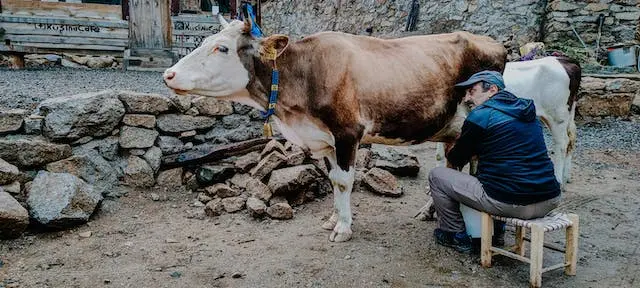
Approx. Cost $1500 to $3000+
Now we talk about Mature cow breeds, defined as those at breeding age or actively producing milk; typically, this cow costs $1,500 to $3,000 or more. Factors such as breed, health, productivity, and reproductive status influence the price of these cows.
This pricing variability reflects their immediate value to a dairy operation, considering they are already at a productive age. Investing in mature cows is a strategic move, leveraging their current productivity to benefit the dairy operation more immediately.
Additional Costs Of Raising Cows
Feeding Costs of buying a cow

The primary ongoing expense in raising cows is feed, averaging 3% of their body weight daily. For a 1,000-pound cow, this translates to about 30 pounds, costing between $30 and $100 monthly.
Feed options include hay, pasture, grain, or commercial feeds. Costs may fluctuate, with winter being pricier due to the need for supplemental feeding in scarce pasture conditions. This highlights the importance of strategic planning for farmers to manage annual feeding expenses.
Vaccination Costs
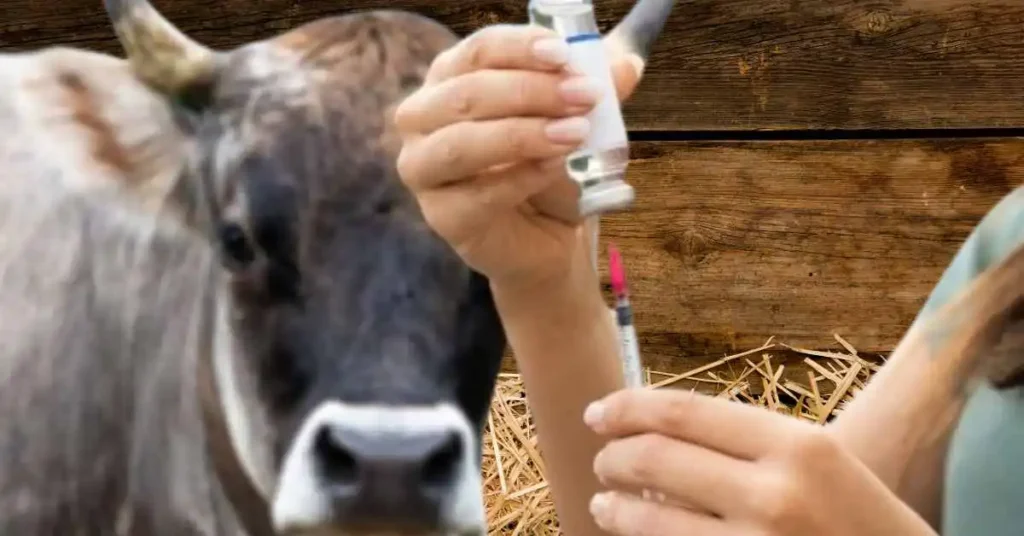
Maintaining a healthy herd requires routine veterinary care, encompassing regular vaccinations, deworming, and preventive health measures. These essential practices are necessary expenses for farmers.
Unplanned costs may arise from emergencies or disease outbreaks within the herd. Annual healthcare expenses per cow’s estimated cost range from $20 to $40, underscoring the importance of budgeting for routine and unforeseen veterinary needs to ensure the overall well-being of the livestock.
The cow: Which type is the most profitable?
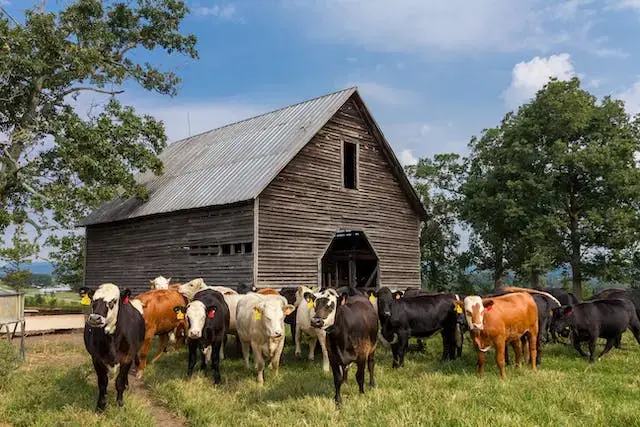
Dairy cows can be a gold mine, churning out milk and cheese for good money. But they’re like high-maintenance babies – they need attention and care. Farmers have got to work hard to keep them happy and healthy!
On the other hand, beef heifers also present a profitable venture, providing a consistent income through auctions or direct-to-consumer sales. Notably, they require less maintenance than dairy cows, making them an appealing choice for individuals with limited time but a desire to generate revenue from livestock.
While multiple factors contribute to the decision, beef heifers often emerge as more profitable due to their lower maintenance requirements—necessitating regular health check-ups, vaccinations, and sufficient grazing land and feed. Now, we talk about other cow-cost types.
| Type | Average price |
| Angus Bred Heifers | $1,500 to $1,900 |
| Bulls | $2,700 to $5,400 |
| Cows | $1,300 to $1,600 |
| Cows w/calves | $1,400 to $3,200 |
| Show-quality Bull | $3,700 to $5,800 |
Which type of care will the cow need?
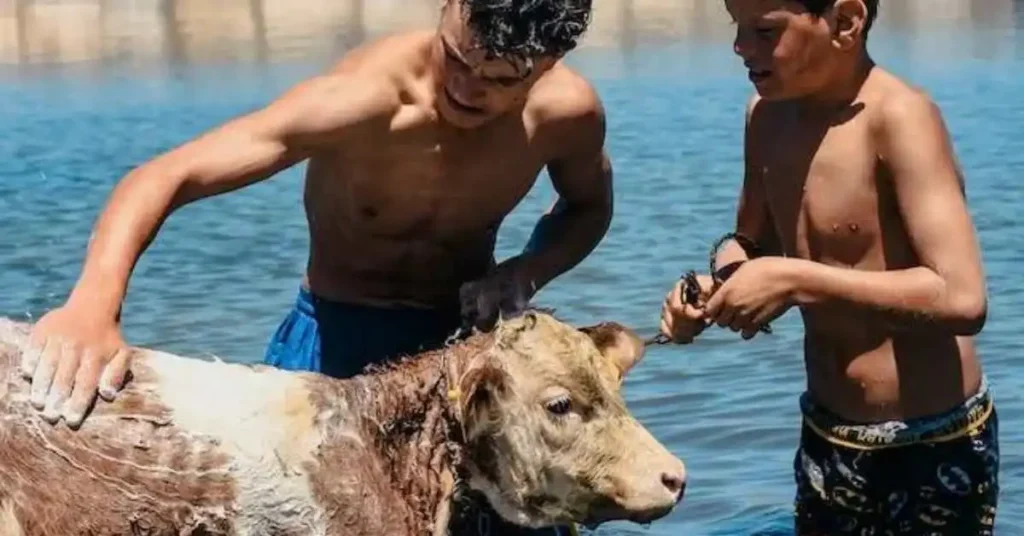
Proper nutrition is a cornerstone of cattle care. Offering good grazing land and a well-balanced feed is essential to sustain their energy levels, support metabolism, and maintain optimal cow weight. By prioritizing these elements, farmers can ensure the health and vitality of their cattle, ultimately influencing the long-term cost of raising and caring for these valuable animals.
Factor affects the cow price:
Navigating the Ups and Downs of Current Market Trends

It’s essential to grasp the dynamics of the cattle market to make intelligent buying decisions. Similar to other markets, the cattle market experiences changes over time. Price fluctuations can be influenced by shifts in the demand and supply of beef or milk, fluctuations in feed costs, weather conditions, and even disease outbreaks affecting the health of herds.
Location
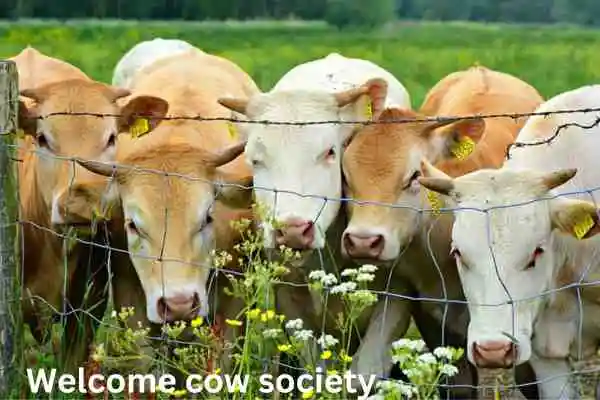
The economic value of a cow is significantly influenced by its location. Now we talk about how Geographical factors play a pivotal role in determining the cow cost and quality of cattle.
For instance, certain regions in the United States are renowned for producing high-quality dairy milk production cows, leading to higher prices than other parts of the world. Canada and the United States have some types of cows, the finest beef cows globally.
Moreover, the location, whether rural or urban, can impact the price of cows. Cows raised in rural areas often command higher prices due to the perceived benefits of an environment free from pollutants and other hazards associated with urban living.
Economic conditions

We discuss how economic value affects cow cost. The economic value of a cow is significantly influenced by the economic conditions specific to a given area. With a high order for beef cows or other dairy items, such as countries like the United States and Brazil, known for their essential beef consumption, cows are likely to carry a higher value.
This is credited to their ability to produce remarkable quantities of meat and milk. Furthermore, any change in the social-class scenery of the area, such as changes in population size or shifts in agricultural production, directly impacts the cost of cows.
Farmers need to consider these dynamic factors when determining the value of their cattle, as changes in economic conditions can directly influence the market and subsequently impact livestock pricing.
Being mindful of these economic factors is crucial for accurately assessing the worth of each cow. This awareness allows farmers and ranchers to navigate the market more effectively, ensuring that the value of their cattle aligns with the region’s economic realities.
Best Way To Lower The Cost Of A Cow
Raise a cow is a substantial investment, but cost reduction strategies include strategic purchasing, building relationships, and leveraging scale to optimize expenses.
Buying Cattle in Bulk

Now, we explain how to buy cows in bulk form at a price. Saving money in cattle farming is simplified through the straightforward strategy of buying in bulk. This cost-saving approach is applicable across various facets of cattle management, from acquiring feed to securing medical supplies.
Suppliers commonly offer substantial discounts for bulk purchases, making it economically advantageous to opt for larger quantities. For example, opting for a pallet or larger amount instead of buying feed in smaller bags can yield significant savings.
However, it’s imperative to acknowledge the need for proper storage facilities to maintain the quality of bulk items over time. Moreover, careful consideration must be given to ensuring that the purchased quantity aligns with the operational timeline, as unused items may spoil, potentially negating the financial benefits of bulk buying.
Purchases Directly from Farmers

You are purchasing valuable awareness about the health and lineage of the cow directly from a farmer’s supply, translating into long-term cost savings. This direct interaction offers a comprehensive understanding of the animal’s well-being, contributing to informed decision-making.
Developing relationships with local farmers also creates opportunities for bulk purchases and potential discounts. Farmers may be inclined to offer lower prices to buyers committed to acquiring several animals, highlighting the advantages of fostering local agricultural partnerships.
However, it’s crucial to balance cost reduction and maintaining quality. While these strategies effectively lower expenses, the ultimate benefit lies in positively impacting the health of your cattle and enhancing overall operational productivity.
Overview of the Most Costly Cows
| Status | Cows | Approximate Price |
| 1 | Wagyu | $30,000 |
| 2 | Brahman | $20,000 |
| 3 | Black Angus | $12,000 |
| 4 | Longhorn | $10,000 |
| 5 | Limousin | $6,000 |
| 6 | Devon | $6,000 |
| 7 | Piedmontese | $5,000 |
| 8 | Gelbvieh | $4,600 |
| 9 | Simmental | $3,500 |
| 10 | Holstein Friesian | $3,000 |
| 11 | Jersey | $3,000 |
| 12 | Charolais | $2,700 |
| 13 | Shorthorn | $2,500 |
| 14 | Maine-Anjou | $2,500 |
| 15 | Hereford | $1,500 |
| 16 | Belted Galloway | $1,000 |
Conclusion
The cost of a cow is not just a number; it reflects the complex teamwork between agriculture, finance, and cultural values. Understanding the factors that affect cow cost allows us to value the true worth of this many-sided animal, not just as a thing but as a crucial player in our food system and cultural land.





